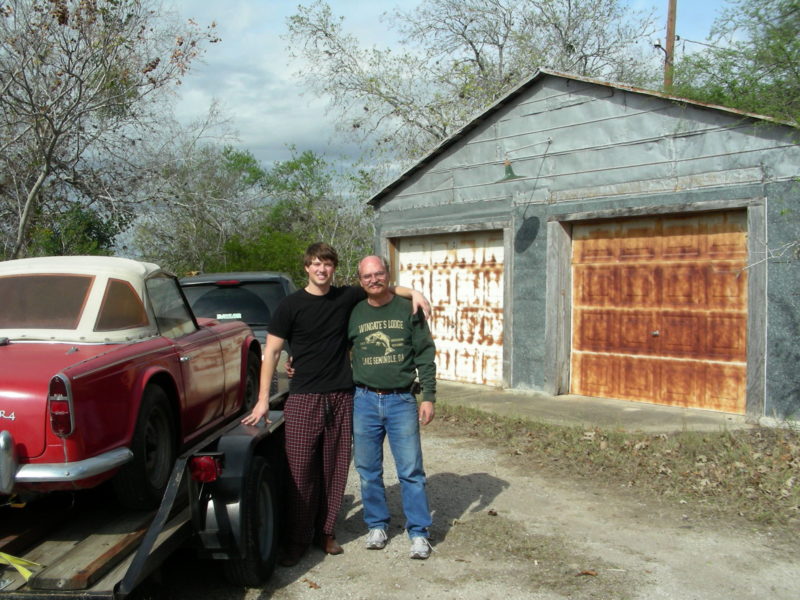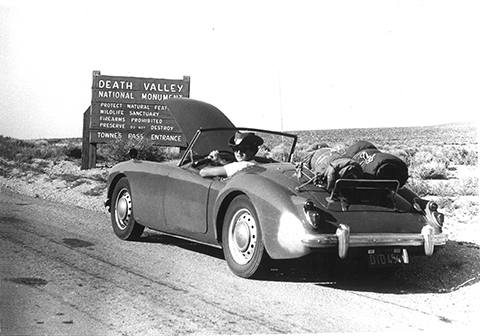They’re the automotive equivalent of reality TV: today’s televised collector car auctions. Once the domain of just those in the know, these events have become a big deal thanks to their big prices, big lights, big ratings and big excitement.

When bids come in from the audience, telephone and Internet, the price might go beyond your maximum limit. Still, it’s fun to see a sweet car change hands for record prices. A Number 2 condition Austin-Healey 3000 can hit $75,000, while a Mini Cooper might hit $22,000.
There’s a method to this sensory overload, assuming you can take in the whole picture. The TV cameras focus on the auction block and the bidders, but that’s just part of the auction scene. Even if you’re not in the market for a classic car at the moment, attending an auction can be great entertainment. It’s equal parts ultimate car show and people watching experience. These are some of the reasons why people would like to Become an auction broker.
Step 1: Make Plans
For the most part, there are two main reasons to attend an auction: to buy a car or just watch the proceedings. Sure, some people are there to sell, but they’re greatly outnumbered by the bidders, tire kickers and spectacle watchers.
Few people just stumble across a collector car auction and start bidding. There’s usually a bit of legwork to be done before attending.
First, decide why you’re going. Do you seek a rare car or a perfect example of something special? Or do you simply want to check out the excitement firsthand? Both are valid reasons for attending.
Find a sale that appeals to you based on location, cars offered or the auction house’s reputation. Once you’ve zeroed in on a sale or sales—don’t forget, one town might host multiple sales at once as is the case with Scottsdale in January and Monterey in August—figure out what it takes to attend. Do you have to register as a bidder? If so, how much does that cost? Or can you just pay the admission fee?
Buying an auction catalog usually includes admission for you and a guest. Even if you don’t intend on bidding, you’ll look like a high roller and get a cool keepsake.
If you intend to buy a car, do you have your finances set? A letter of credit from a bank might be required. Each auction company spells out specific requirements for bidders on its web site.
You’ll also need to have an auto insurance policy ready to go. Even if you plan on having the car shipped home, once it’s yours it needs to be properly insured.
Step 2: Do Your Car Model Research
Research the car you’re interested in before you arrive. Know what is stock equipment so you can recognize what has been updated or modified on the car.
Bring along the cell number of an expert on the car model so you can ask about something specific you may be puzzled about. Take along a Moss Motors catalog so you can get a feel for the cost of parts that look worn and in need of replacement. You might also bring along a laptop so you can research any noted issues later that evening in your hotel room.
Step 3: Know the Value
Any object is worth only what someone is willing to pay for it, but what happens when two people seek it? The price goes up.
Don’t let emotion steer your bidding. Instead, know what the car is worth and set your personal limit in advance. Remember to factor in the buyer’s premium from the auction house—that can easily be an additional 10 percent. You’ll also need to consider other costs like tax and shipping.
Even though Kelley Blue Book won’t be much help, good sources for collector car values exist. Hagerty’s Cars That Matter is a price guide aimed right at the car collector. The guides are regularly updated to keep tabs on raising values and market corrections. Past auction results, as well as the sale reports found in several sports car publications, can also be invaluable.
Is the car’s provenance known? Did a celebrity previously own it? Was it one of a few factory-built specials? Those two facts can greatly influence the value.
Finally, get informed input. Experts in the field, like the people who sell and service that car model, can give perspective on value. Key people in car clubs can also be invaluable resources—do some networking.
Step 4: Arrive and Kick Tires
The major auction companies generally only offer really nice examples, but sometimes stinkers do creep into the mix. If you’re going to bid on a car, it’s your job to do some due diligence and check it out firsthand.
The time to do this inspection is not as the car is rolling onto the auction podium. Most auction companies offer a preview day when all of the cars are available for critical review. Spend some time crawling around the car in an effort to get up close and personal. Is the car as represented in the auction catalog? If restored, how well was the work done? Was the car simply treated to a quick re-spray of resale red, or was quality work performed throughout? Are the tires dry-rotted and old?
Also, how complete is the car itself? Does it include the proper tools and manuals?
Sometimes the seller—or the seller’s agent—will be present. Can they shed some more light on the car? Do they have the paperwork to back up the claimed restoration work or back story of this particular car?
While you might not be able to go for a test drive, try to arrange at least a ride along. We’d caution bidding on a car that you haven’t seen operate under its own power.
Step 5: Waiting for Arrival
Before each car crosses the auction block, it’s put into a holding pen. This is your last chance to see it up close. Do the doors, hood and trunk close with a reassuring thud? Are the panel gaps consistent? And is it really the one that you want?
Before the car enters the auction house, grab a seat with a good view of the podium, find your paddle, and get ready to bid.
Step 6: Do Thy Bidding
Remember, no matter how bright the lights and how excited the auction crew, don’t let emotion call all of the shots. Sure, you’re allowed to get emotional about a car, but far too often people let it get the better of them. It makes for great TV, but if you allow yourself to get sucked in, you may end up paying too much for the car.
The biggest piece of advice we can offer: Don’t forget your maximum budget, and make sure it includes all of the extras like tax and the buyer’s premium.
You should also know who you’re bidding against. Is your competitor in the room with you? Have a friend act as your spotter. Can you see him? Or is there a mystery person at the end of a phone? Your gut might warn you when what’s transpiring doesn’t feel right; pay attention to your intuition.
If the bidding reaches your maximum amount, be prepared to walk away. It’s not about winning at all costs. It’s about getting the best car for the best price. Unless it’s the only example of the car on the planet, odds are strong that another one will soon come up for sale. That big Healey might have been restored to pristine condition, but it’s not the only one around. It’s a big sea and there are plenty of fish.
Step 7: Sold!
Going once, going twice, sold! The hammer cracks and the car is taken away. If you’re the high bidder—assuming you didn’t let emotions or ego cause you to pay too much—congratulations on the purchase.
Now what? For one, how do you get the car home? You can drive it home, but it might be a long trip, plus there’s the question of temporary tags. Transportation companies usually have representatives at the bigger auctions, and for a fee they can safely whisk your new car to your address.
The auction house will hold your hand for the remainder of the process, as titles need to be transferred, taxes collected, and paperwork signed.
Now it’s time to enjoy your latest acquisition.
Current Values
Classic Motorsports magazine’s auction expert Andy Reid is a walking price guide. Here are his ballpark values for some No. 2 condition cars. Of course, there’s always the caveat that market prices are constantly changing and past values don’t always guarantee future results.Austin-Healey 100 $50,000-$70,000
Austin-Healey 100/6 $60,000-$75,000
Austin-Healey 3000 $50,000-$75,000
Austin-Healey Sprite (bugeye) $12,500-$14,000
Austin-Healey Sprite (square-body) $8,000-$10,000
Jaguar XKE Series 1 roadster $75,000-$100,000
Jaguar XKE Series 1 coupe $60,000-$75,000
Jaguar XKE Series 2 roadster $48,000-$60,000
Jaguar XKE Series 2 coupe $28,000-$30,000
Jaguar XKE Series 3 roadster $40,000-$75,000
Jaguar XKE Series 3 coupe $28,000-$35,000
Jaguar XJS coupe $6,500-$8,500
Jaguar XJS convertible $8,000-$12,000
MGA $24,000-$28,000
MGA Twin Cam $35,000-$45,000
MGB (chrome-bumper) $10,000-$15,000
MGB (rubber-bumper) $8,000-$10,000
MGC roadster $21,000-$25,000
MGC GT $14,000-$17,000
MG TC $32,000-$40,000
MG TD $22,000-$26,000
MG TF/TF 1500 $28,000-$35,000
MG Midget $6,000-$9,500
Mini $14,000-$17,000
Mini Cooper $16,000-$22,000
Mini Cooper S $23,000-$30,000
Triumph TR2 $30,000-$35,000
Triumph TR3 $25,000-$30,000
Triumph TR4/4A $17,000-$25,000
Triumph Spitfire Mk IV/1500 $6,000-$8,500
Triumph TR6 $17,000-$22,000
Triumph TR7 $3,500-$6,500
Triumph TR8 $8,000-$12,000
Condition Matters
While the year, make and model certainly influence a car’s selling price, so does its condition. Many in the auction community rank cars on a scale from 1 to 4. To show how conditions affects price, following are the values of a 1967 MGB at each condition level.
No. 4: You’re not going to see too many fixer-uppers at a classic car auction, so the lowest rung starts with cars that can best be described as decent daily drivers. They won’t be rotten or rusty, but the paint, interior and chrome will reflect the years. A few minor mechanical issues might also be present.
No. 4 condition 1967 MGB: $3,500-$4,000
No 3: These cars can be called good examples. They’re not perfect however, as a great paint job might be teamed with old chrome or a tired interior. The engine might have been recently rebuilt, but the chassis could still use some work. These are cars that won’t leave you stranded, but they aren’t concours winners.
No. 3 condition 1967 MGB: $5,000-$6,500
No. 2: Picture a car that could easily win a local show, not Pebble Beach or Amelia Island, but the typical regional or national British car outing. The exterior and interior both look sharp and correct, while the mechanical parts have all been restored. A well-trained eye might pick up a few minor issues like small paint flaws, but by and large this car would certainly impress the average enthusiast.
No. 2 condition 1967 MGB: $10,000-$12,000
No. 1: Very, very few cars make it to this level. A true No. 1 car has been restored to the highest degree and everything is 100 percent perfect. Every fender gap is spot on, the chassis is the correct shade of black, and the convertible top material perfectly matches the original spec. This is exactly how the car looked the day it rolled out of the factory—or, in some cases, maybe even better.
No. 1 condition 1967 MGB: $20,000+
Practical Guidance
Planning on attending a sale in the near future? Here are some helpful tips to make the most out of the experience.
Do Your Homework: Some truly special cars can be found at auctions, along with some duds. Enter the sale knowing the particulars about the cars you want.
Buy the Book: The catalog provides all of the details on the cars for sale, plus some exquisite photography. It’s also a great keepsake.
Kick Some Tires: Take advantage of the preview days to personally inspect the cars up close. Our advice is to do it during the daylight hours.
Ask Questions: The sellers or their agents are usually at these events. Have a specific question about a car? The answer is probably nearby.
Question Answers: If an answer sounds wrong or a bit far-fetched, check the appropriate resource or call an expert on the car make and model.
Be Calm: Don’t get caught up in the moment and bid too much. Decide on your top price before the car is on the auction block and know when to quit.
Know the Company: Some auction companies have better reputations than others. Ask around and learn from other people’s experiences.
Story and photos by David S. Wallens








'As the Gavel Falls – Classic Car Auctions' has no comments
Be the first to comment this post!